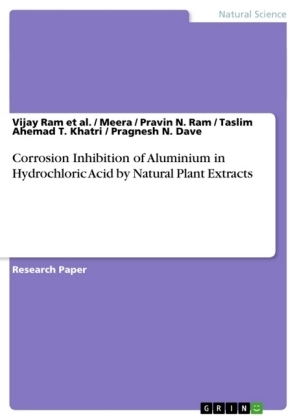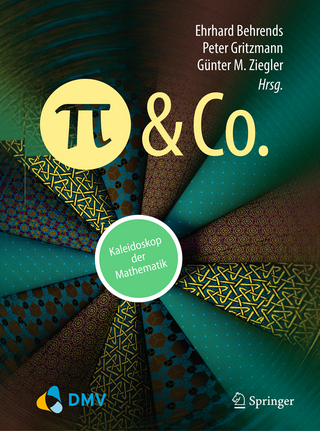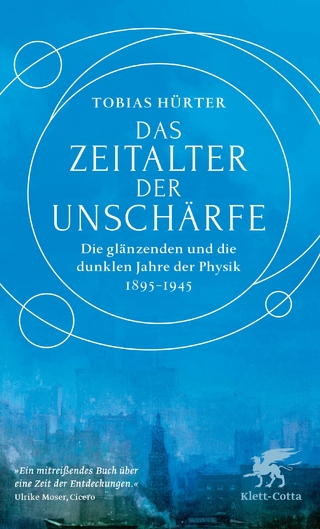
Corrosion Inhibition of Aluminium in Hydrochloric Acid by Natural Plant Extracts
Seiten
2014
GRIN Verlag
978-3-656-73080-4 (ISBN)
GRIN Verlag
978-3-656-73080-4 (ISBN)
- Titel nicht im Sortiment
- Artikel merken
Research Paper (postgraduate) from the year 2014 in the subject Chemistry - General, grade: 3, , course: MSc, language: English, abstract: Aluminium, being a highly reactive metal, corrodes rapidly in acidic (pH < 6) and alkaline (pH > 12.5) media. Hence it has to be protected when it is likely to come in contact with such solutions, e.g., during cleaning or acid pickling. One method of protection is the addition of inhibitor to the corroding medium. In the present work, ethanol extract of Azadirechta indica and Murraya koenigii leaves have been investigated as corrosion inhibitor for aluminium in aqueous hydrochloric acid.The corrosion of Alluminium in plain hydrochloric acid, as well as inhibited, is found to increase with a rise in temperature. Thus in uninhibited 0.5 M HCl the loss in weight due to corrosion for an exposure period of 60 min increases from 736 mg/dm2 at 35oC to 852, 922, and 958 mg/dm2 at 45oC, 55oC and 65oC respectively.In inhibited 0.5 M HCl containing 1.30% of Azadirechta indica, it was observed that at 35oC and for an exposure period of 60 min Azadirechta indica confer 100.0% protection. In A. indica, it is observed that the compound at 1.30% concentration show an efficiency 100.0% at 35°C. As the temperature is increased the efficiency decreases. In the case of A.indica, the efficiency decreases slightly and is found to be 72.96% at 65°C. It appears that in the case of Azadirechta indica, the adsorption is of physisorption type which decreases with a rise in temperature.The surface morphology of the Al samples in the absence and presence of A.indica and M.koenigii leaves extract was investigated after weight loss using SEM technique. The badly damaged surface obtained when the metal was kept immersed in 0. 5 M HCl for 60 min without inhibitor indicates significant corrosion. However, in presence of inhibitor the surface has remarkably Improve with respect to its smoothness indicating considerable reduction of corrosion rate. This improvement in surface morphology is due to the formation of a good protective film of inhibitor on aluminium surface which is responsible for inhibition of corrosion. The order of efficiency at 1.30% v/v inhibitor concentration in 0.5 M hydrochloric acid was found to be : Azadirechta indica (100.0%) Murraya koenigii ( 94.79%)
Dr. Vijay R. Ram has completed his Masters of Sciences in Analytical Chemistry and his Doctorate (Ph.D.) in Analytical Chemistry from Saurashtra University. His research area is Method Development and Validation of pharmaceutical drugs as well as in phytochemical investigation of natural plants. He published more than thirty research papers in this field. Currently he´s working as faculty in Department of Chemistry, KSKV Kachchh University, Bhuj-Gujarat, India, as an Assistant Professor.
| Erscheint lt. Verlag | 19.9.2014 |
|---|---|
| Sprache | englisch |
| Maße | 148 x 210 mm |
| Gewicht | 156 g |
| Themenwelt | Sachbuch/Ratgeber ► Natur / Technik ► Naturwissenschaft |
| Naturwissenschaften ► Chemie ► Allgemeines / Lexika | |
| Schlagworte | Acid • Aluminium • Corrosion • extracts • hydrochloric • Inhibition • NATURAL • Plant |
| ISBN-10 | 3-656-73080-6 / 3656730806 |
| ISBN-13 | 978-3-656-73080-4 / 9783656730804 |
| Zustand | Neuware |
| Haben Sie eine Frage zum Produkt? |
Mehr entdecken
aus dem Bereich
aus dem Bereich
Die glänzenden und die dunklen Jahre der Physik 1895-1945
Buch | Softcover (2023)
Klett-Cotta (Verlag)
14,00 €
wie sie denkt, fühlt und Probleme löst
Buch | Hardcover (2024)
Folio (Verlag)
26,00 €


